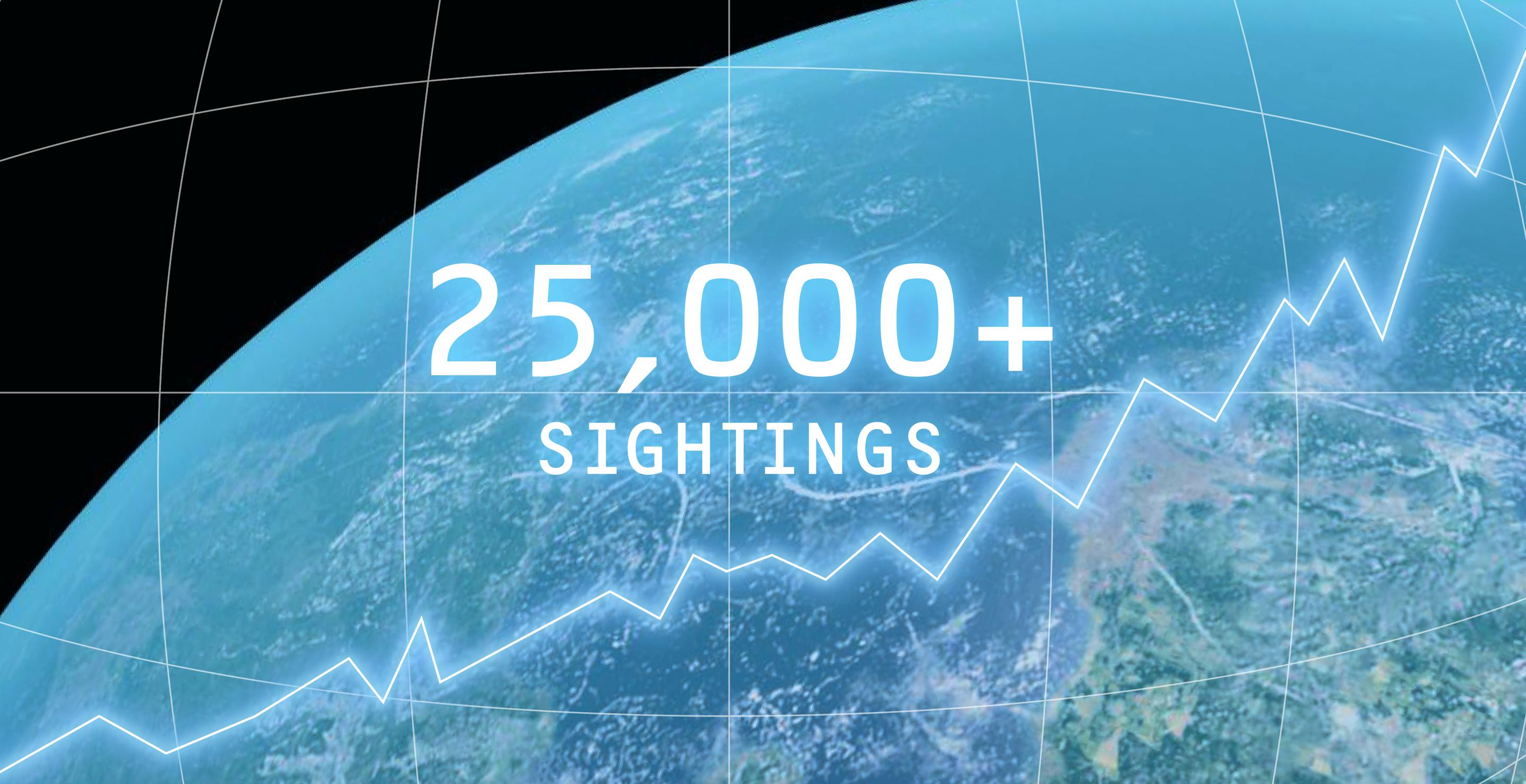

25K Sightings & Counting
Enigma is the #1 destination for the public to report UFO sightings, and the first technology and data-driven platform to do so in a structured, methodical, frictionless way that focuses on serving the public. Submissions to our platform are growing rapidly, and in just 18 months we have received over 25,000 reports.
We are a team of engineers and data scientists, and spend much of our time building, solving problems, and listening to users about their needs. Now that we’ve hit this milestone of data, we wanted to share some of our analysis with you on what we have learned from collecting over 25,000 sightings. A few quick notes about the analysis:
- A human moderator reads and vets every single sighting that is submitted to us. At time of publication, 64% of these submissions have been approved by Enigma’s team. Every single approved sighting is published immediately to our mobile app and website. Sightings that do not meet the quality bar are not approved and are not published anywhere. There are many reasons we would not approve a submission, but typically it’s because the description is not detailed or coherent, the required fields were not filled out, or the media failed to upload. The analysis below is based on all the 25k sightings that we received, not just the approved and published cases that you see on web and the iOS app.
- All of the data below is based on self-reporting – that is to say, information provided by sighters themselves. Enigma did not independently verify this information. For example, if the sighter said "the object was a triangle shape," then we counted it as a triangle, (whether or not they submitted media suggesting a different shape). If the sighter said they "detected the object on radar or night vision," then we counted it as sensor detection (as of today, we are not requiring that they submit the actual sensor data).
Geographic Insights: Where Are UAP Sightings Happening? Sightings Submitted - by country
The United States leads the way in our Enigma collected UAP sightings, contributing 71% of the total. Following the U.S. are the United Kingdom at 8.5%, Canada at 4.8%, and Australia at 3%. This is not surprising, and is largely due to platform bias — our products are still only in English, and the app is only on iOS at the moment, which has large penetration in these countries.
Sightings outside of the U.S. have relatively been on the rise, with the U.K. seeing a significant jump from 6% to 8.5% of sightings submitted to Enigma over the past year.
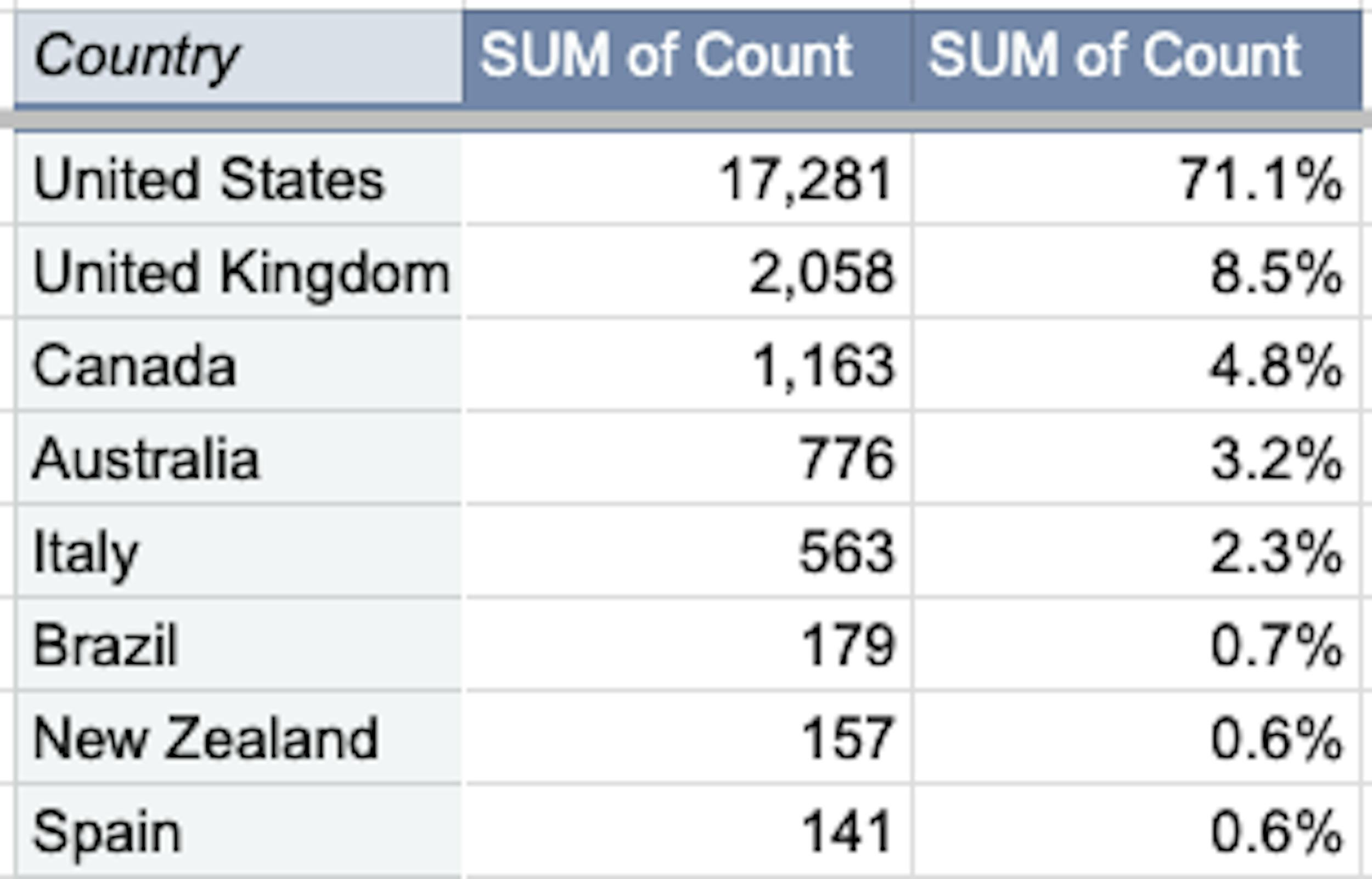
With Enigma’s upcoming Android launch in early 2025, accompanied by an international marketing push, we expect to see a lot more sighting submissions from the international community and in different languages in 2025.
Sightings Submitted - by US State
California receives the most sighting submissions and leads with 12%, followed by Texas and Florida, each at 7%, and New York at 6%.

When we adjust for population size, New Mexico emerges as the state with the highest rate of submissions per 100,000 residents:
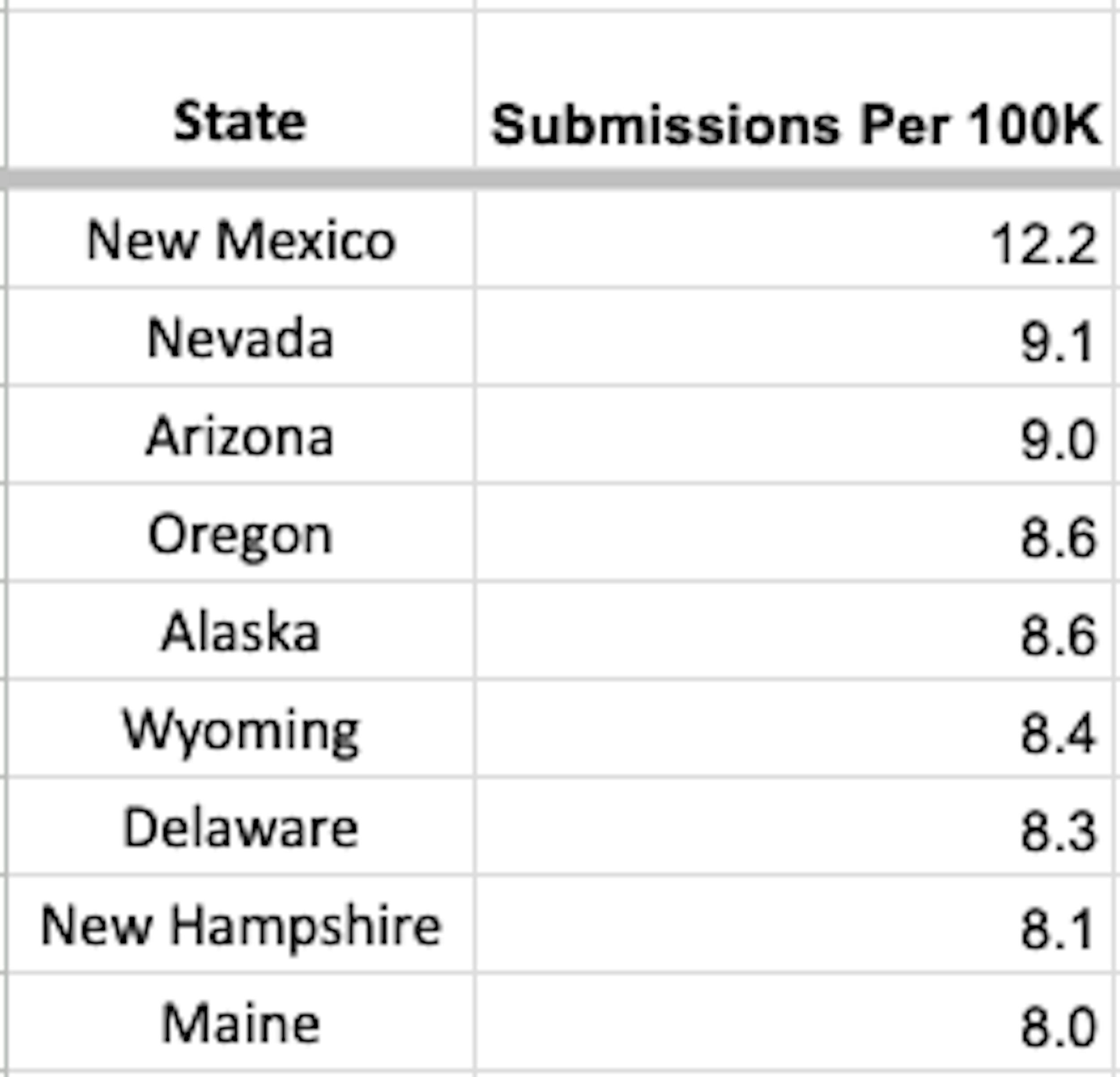
Temporal Trends: When Are UAPs Typically Spotted?
Normalizing for local time zones, most sightings are reported between 7 PM and 11 PM. This aligns with the time people are typically outdoors, whether commuting or doing errands at dusk.
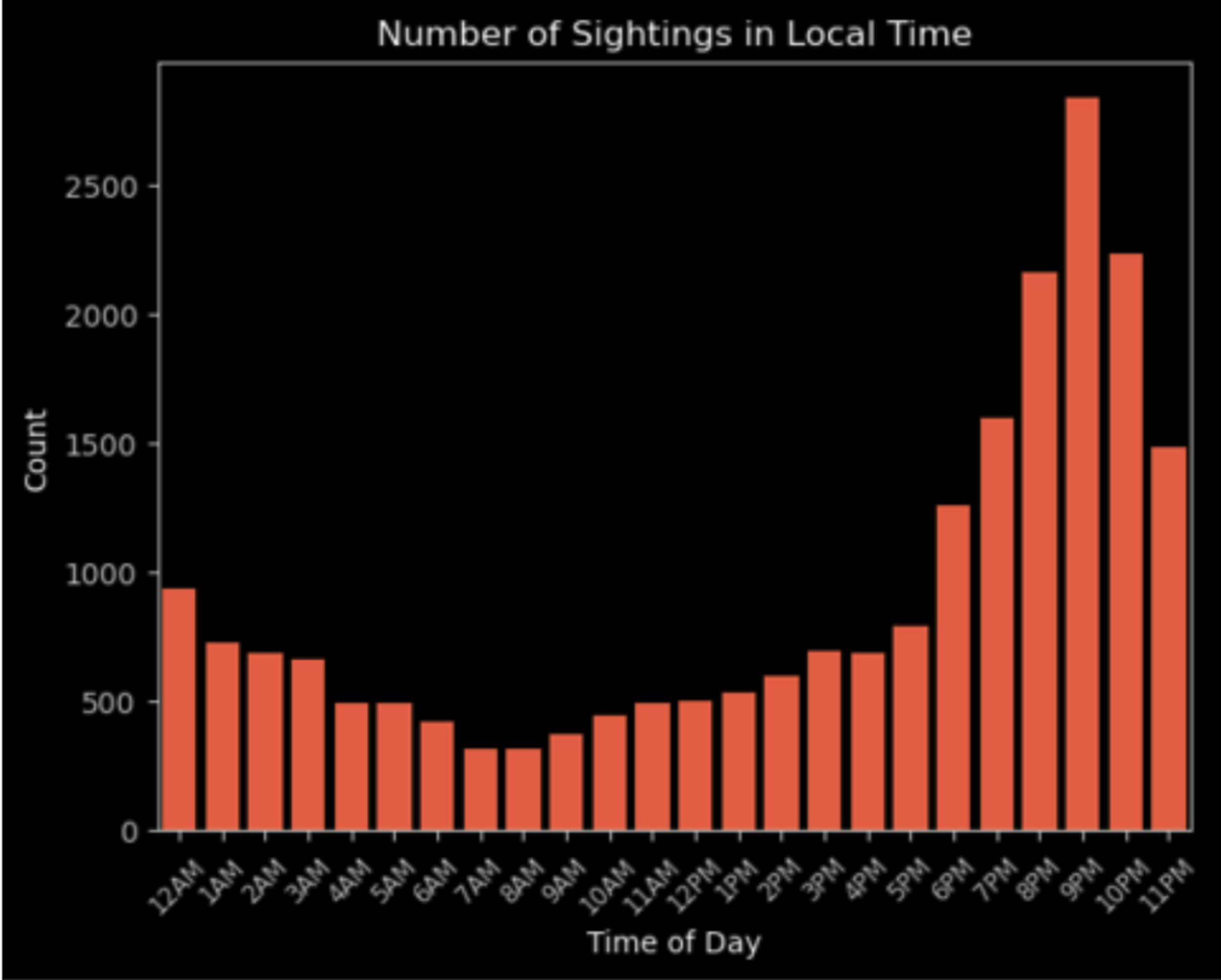
Submissions by sighting date
Our 25k submissions consisted of sighting stories ranging from 1947 through till October 2024, spanning nearly 80 years.

We were interested to see that while 8% of sighters remember experiences from long ago (10+ years), most of our sighting events are recent. In fact 29% of our submissions are shared within 24 hours of the sighter experiencing the UAP.

What Type of People Report UAP Sightings?
When submitting a sighting to Enigma, our system defaults to keeping all submitters anonymous (a small minority do request to be credited for their sighting experience, and we allow for that). Submitters do, however, have the option of sharing non-identifiable, demographic information along with their submission. Approximately 16.3% of witnesses chose to disclose their professions when submitting their reports. Among them, over half (50%) are either currently serving or have served in the military. Another 22% identified as scientists, while 10% were law enforcement officers, and 8% identified as pilots.
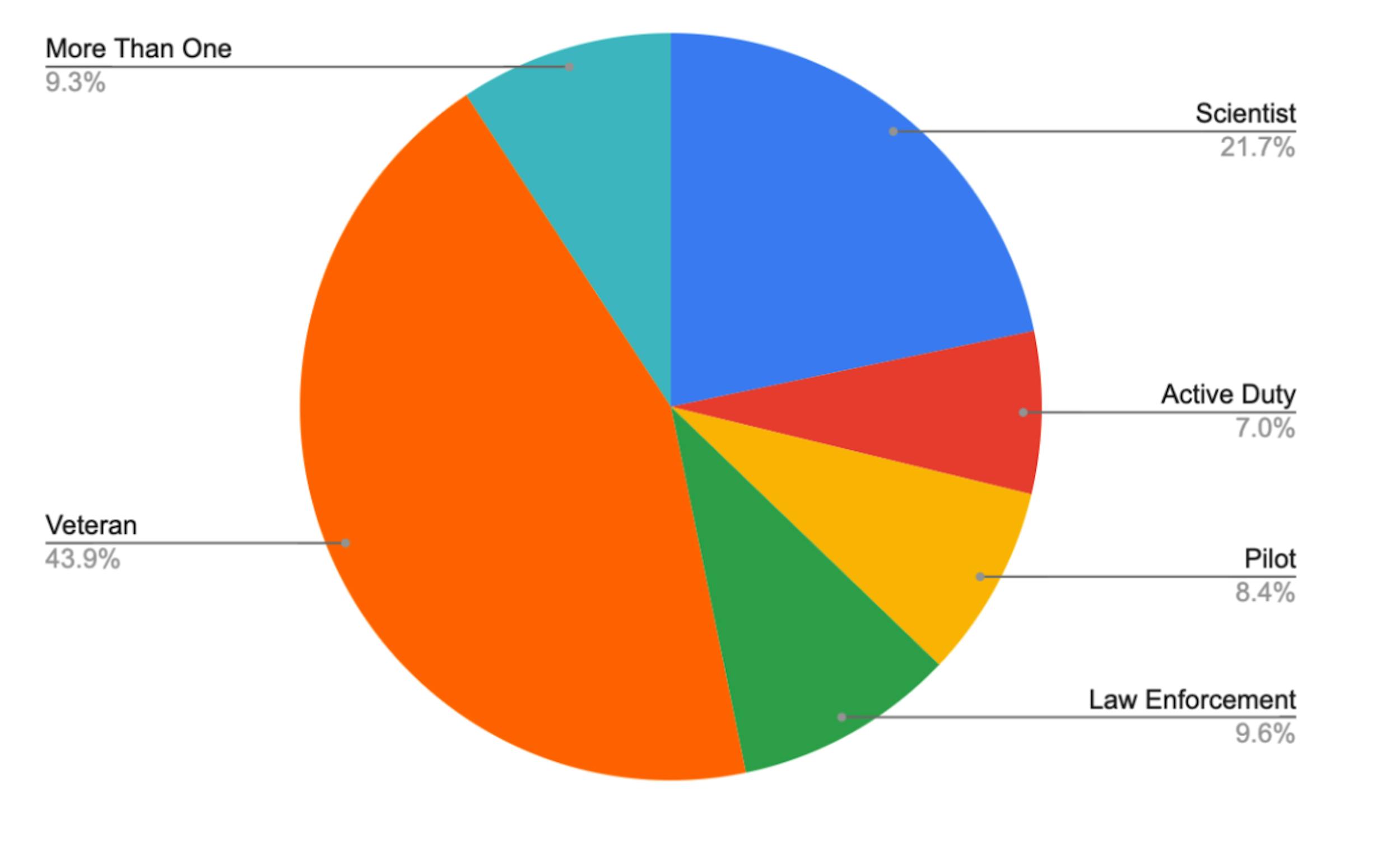
The high percentage of sightings from individuals in these professions suggests a sense of civic duty in reporting unusual phenomena. As stigma surrounding UAP sightings decreases, we hope more witnesses from these relevant backgrounds and professions will feel empowered to share their experiences.
Object Descriptions: What Are People Seeing?
Analyzing the full dataset of 25K sightings, circles or spheres were the most commonly reported object shapes, accounting for 23% of sightings. This trend is echoed in reports from pilots and military personnel, particularly in references to "orbs" or spheres, which the All Domain Anomaly Resolution Office (AARO) also identified as the most commonly reported shape in military reports over the past 25 years.
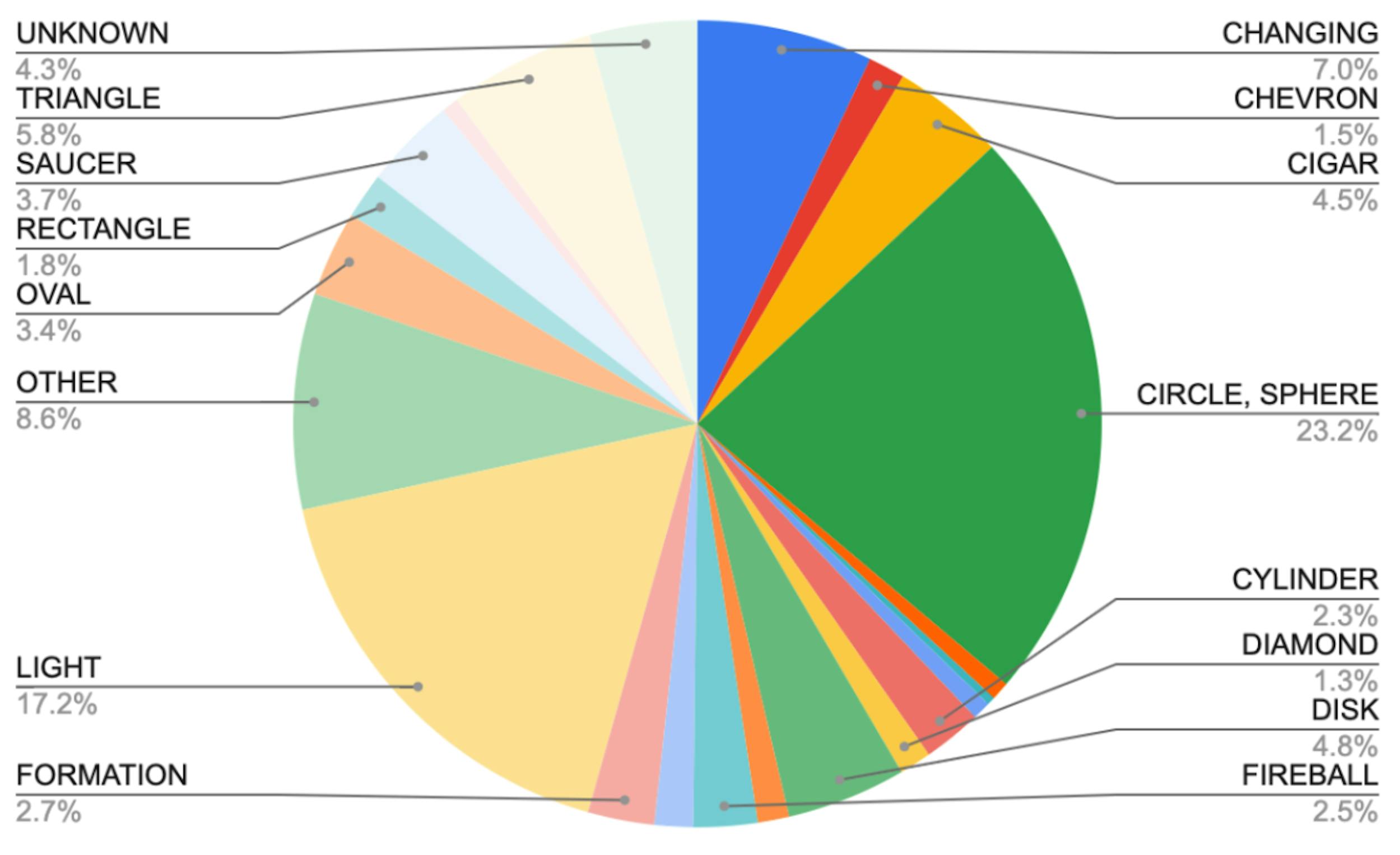
The next most frequently seen shape was “light,” at 17%. Although interesting, we take “light” shape submissions with a grain of salt, because it is often used to describe point light in the distance, that may actually be misidentified objects such as stars, satellites, or planes.
Interestingly, 16% of reports indicated that the object changed shape or did not fit neatly into pre-defined categories.
Anomalous Behavior: How Many Objects are Truly Inexplicable?
We know the question on everyone’s minds is – how many of these are actually UFOs?!
This is a challenging question at the core of the mystery and we take it seriously. There is a delicate balance between eliminating what is likely a known object, like a drone, and leaving room for genuinely exotic objects that may at first appear to be ordinary, but are in fact anomalous — meaning, not currently explicable by publicly understood science or technology standards. Determining whether an object sighting is anomalous is complex -- it’s both an art and a science-- and we are committed to improving our methods and analysis over time. Currently, we focus on two key indicators: (1) the absence of visible known propulsion mechanisms (such as wings, rotors or exhaust) and (2) flight patterns that are unusual, erratic, abrupt, or at extremely high speeds. The analysis below uses this self-reported information from the submitters, and only from approved sightings.
In the future, we will incorporate much more analysis in assessing anomalous behavior. We are building out novel technology and tooling that will validate self reported data – including triangulation of an object’s velocity and position using smartphone metadata, eliminating confounding variables by integrating known object data layers and independent sensor overlay. We are also building new AI tools to analyze the video itself for anomalous flight patterns.
Across the approved and published sightings (14.6K sightings), we found:
- 22% of witnesses reported that they saw no observable means of propulsion on the object – including no fixed wings, a rotor, or exhaust jet.
- 11% of witnesses (1,628 sightings, as of September 2024) shared there was no observable means of propulsion, and that the object exhibited anomalous flight patterns.
- Circle / Sphere is the most common shape, followed by light in this 11% subset.
Scoring Anomalousness
To quantify the anomalous nature of sightings, Enigma applies a proprietary scoring algorithm to every sighting. The goal is for us to have a mechanism to quickly help us find what we are looking for, as the volume of reports submitted to us rapidly scales. Every sighting submitted to us is automatically scored from 1 to 100 by a multivariate model. The higher the score, the higher both the certainty around the event and the anomalousness of the object. There is no human input into the score, and it is a work in progress. We continue to regularly refine the methodology of scoring to incorporate new factors as we learn more about what UAP reports are interesting.
So far, we see that this algorithmic score independently aligns with what our human moderators believe: the 11% of sightings with no observable means of propulsion and erratic movement (anomalous sightings) have an average score of 61 with two peaks around 50 and 70. This is higher than the full 25K submitted sightings, which score on average 45.
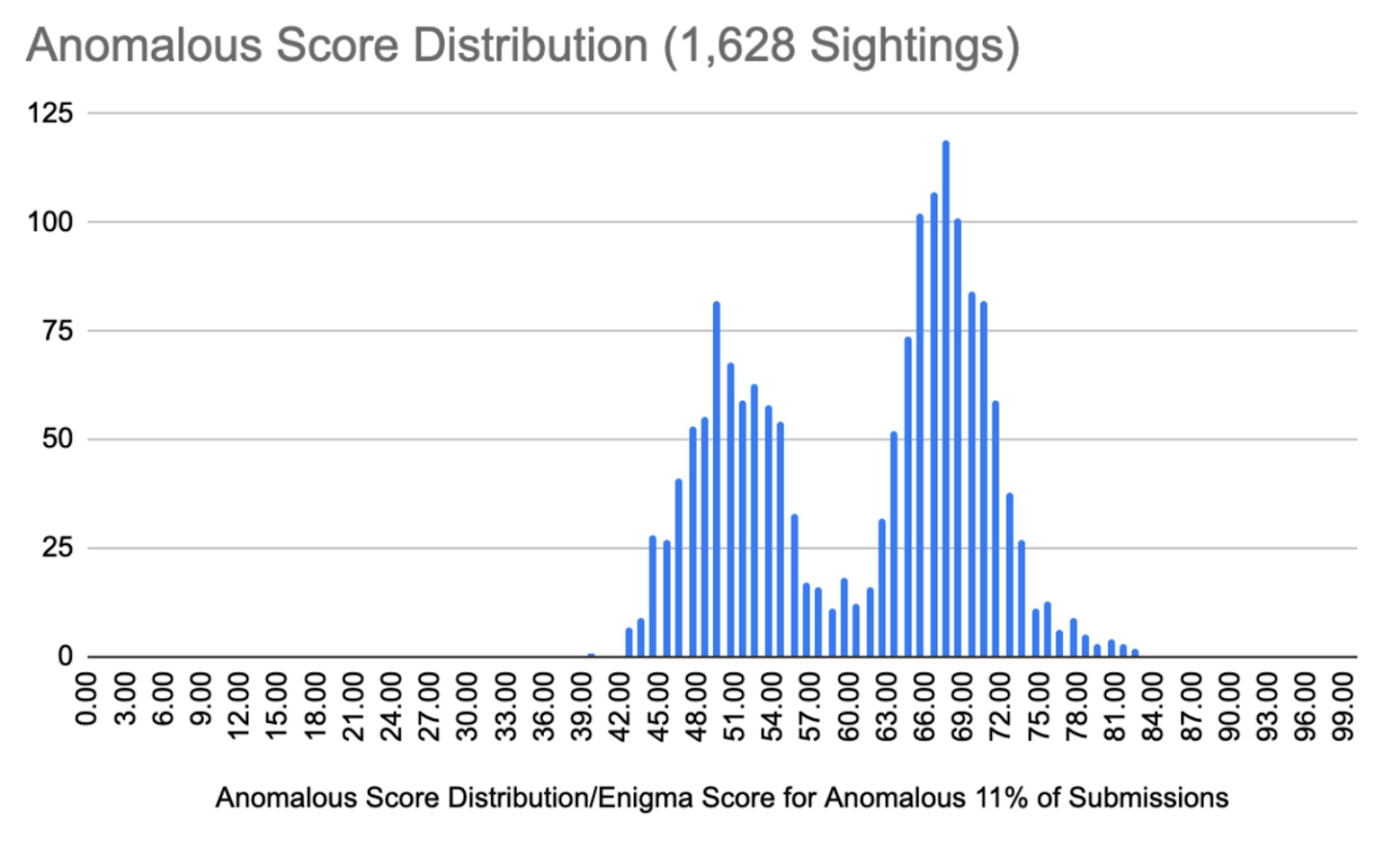
Looking Ahead
As we continue to refine our analysis tools and expand our sightings dataset, we expect to uncover even more insights into UAP. In the coming weeks, we will start to publish more of the specific case studies and analyses we are running – including on trends like large triangles and metallic orbs, and potentially queries around sites of interest, such as nuclear facilities. If you have suggestions of what analyses you’d like to see, please send them our way at [email protected]
Enigma is made up of technologists, so building is in our DNA, and we fundamentally believe that just as technology has made our daily lives easier and more efficient, it can also help accelerate progress in the UAP sightings realm. By leveraging technology and by being obsessed with customer support – that is, serving sighters – we can accelerate the sharing of sighting stories and scale coverage of what's anomalous in the skies.
Our team hails from a wide range of backgrounds across data science, mapping, and consumer apps – we come from places including Foursquare, Dropbox, Snap, Mapbox, Instagram, Tumblr, AWS, Apple, Nike, Amazon, Samsung and Google. Although we are just a small startup and constantly have to consider resource tradeoffs, this background and training means our team is obsessed with iterating, improving, and listening to our community's needs.
As we hit the 25,000 submission milestone, we are proud of what we have built and remain committed to improving our platform. As we think about the year ahead there's a lot of exciting things to come.
Stay tuned for more updates as we work to demystify the skies, one sighting at a time. Join the Enigma network by downloading the free app. Happy skywatching!